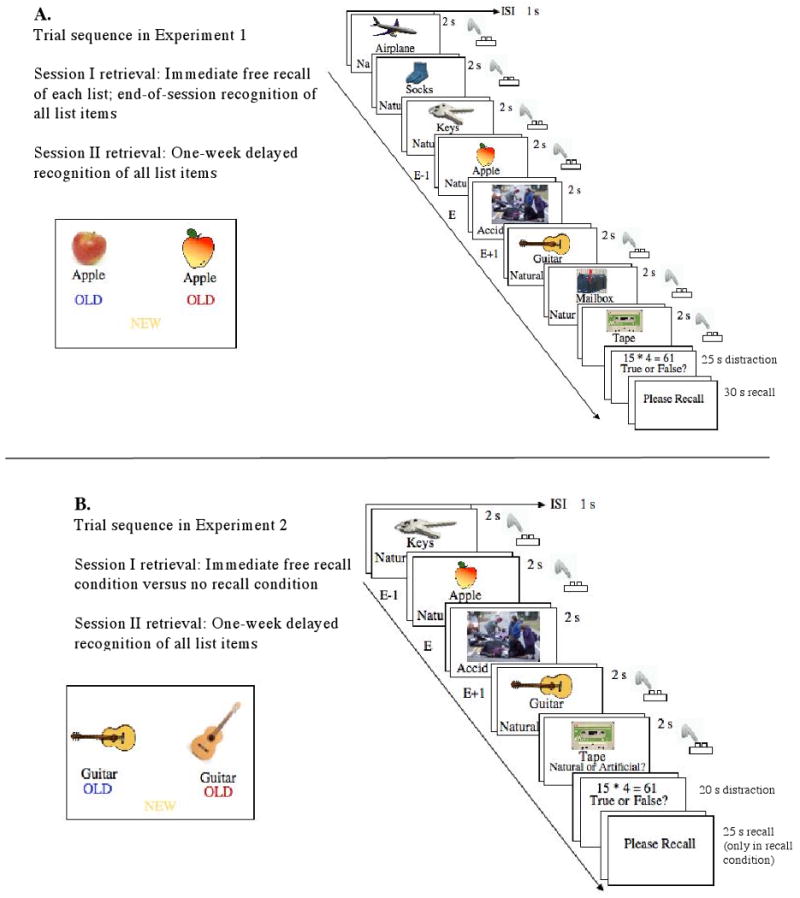Figure 2.

Figure 2A. The experimental timeline used in Experiment 1 for each encoding trial (list) and the format of the recognition memory test. Within each encoding list, either three or four of the non-oddball items were real photographs of objects (natural stimuli) and the remaining items were computer-generated objects (artificial stimuli). Across all lists, half of the items were real photographs and the remaining half consisted of computer-generated objects. Participants were asked to indicate with a key press whether the non-oddball item presented was “natural” (a real photograph) or “artificial” (a computer-generated image). Each list also included one emotionally arousing oddball or one neutral oddball inserted into list position 3, 4, 5 or 6. During the run, participants were presented with 24 lists. Each list was followed immediately by a 25-second distracter task during which participants were presented with math problems and solutions and had to determine whether the solutions were correct or incorrect. Episodic memory was tested immediately after the 25-second math task and was signaled by the words “Please Recall.” At this time, participants had 30 seconds to write down as many items from the list as they could remember. The computer displayed the time remaining and a beep occurred at the end of the elapsed time to alert the participant that a new list would appear. Following the presentation of the 24 lists, half of the participants took an immediate recognition test for both the oddball and non-oddball items. The remaining half took the recognition test one week later. On each trial of the recognition test, participants were presented with a pair of items that shared the same verbal label (e.g., both were “apples”) but differed in other visual features (e.g., orientation, color, shape). The word “old” appeared below each item either in red (item on the left) or blue (item on the right) font. The word “new” appeared in yellow and was centered below the two “old” labels. Participants were instructed to indicate which of the two items matched the non-oddball item seen previously, or if both of the items were new.
Figure 2B. The experimental timeline used in Experiment 2 for each encoding trial (list) and the format of the recognition memory test. Within each encoding list, two of the items were real photographs of objects (natural stimuli) and the two remaining items were computer-generated objects (artificial stimuli). Each list also included one emotionally arousing picture or one neutral oddball inserted into list position 2, 3 or 4. Because of the shorter lists than in Experiment 1, the math task was reduced from 25 to 20 seconds and participants were allotted 25 seconds (instead of 30) to write down as many items from the list as they could remember. Participants in the no-recall condition started with a new encoding list instead of recalling the list items after the distraction task. Following the presentation of the 24 input sequences, all participants returned one week later to take the recognition tests for oddball and non-oddball stimuli.
